Lab Notes
Short stories and links shared by the scientists in our community
Surgeons can feel a robot’s hands performing surgeries for them
Scientists at Texas A&M developed a system using electrical pulses to help surgeons using the hands feel what they are doing
Although a “robot hand” might sound like something out of a science fiction movie, highly functional robotic hands are being developed for use in surgeries. Robotic hands are more compact than human hands, which reduces the size of the incisions needed to accommodate them. Robotics may also allow surgeries to be performed remotely, enabling surgeons to protect themselves in the case of, say, a global pandemic.
The major hurdle facing surgeon-guided robotic hands is the inability to accurately gauge the position of the hand in space. That’s because with the loss of a human hand comes the loss of proprioception, the innate spatial awareness of the body (this is what allows you touch your finger to your nose, even though you can’t see it). In a new study, researchers at Texas A&M University have developed a strategy to create the sensation of proprioception while using a robotic hand.
They delivered continuous electrical shocks — the intensity of which correlated with the proximity of the hand to its target — to the operator’s fingertips. They found that this technique enabled better distance perception than simple visual processing, and could therefore prevent excessive (and potentially damaging) force between the robotic hand and delicate tissue during surgery.
Genome analysis of Lactobacillus bacteria finds that they make up 25 distinct groups
These bacteria are important for gut health as well as in foods like kimchi, sauerkraut, and yogurt
Photo by Micah Tindell on Unsplash
One of the most important groups of probiotic bacteria – both in terms of their impact on human health and for their economic significance – are the Lactobacilli. These are the ones you especially find in yogurts and yogurt drinks that heavily advertise their probiotic virtues.
The Lactobacillus genus is one of oldest known groups of bacteria, and the first species was named in the early 1900s. More recently, the genus has been called one of the most significant on the planet, because of its impact on human health and societal development through its role in innovations like food fermentation.
As of March 2020, over 250 species belonged to the genus Lactobacillus – and this has started to cause problems for scientists, who note that there is a wide diversity of form and function among the group, which is not apparent from the extensive use of the Lactobacillus name. We need a simple way of telling these species apart.
To address these issues, and to tidy up the scientific record, the authors of a new study in the International Journal of Systematic and Evolutionary Microbiology have analysed the genome of every existing Lactobacillus species, and they now propose that these species constitute 25 distinct genera. The new groupings make more intuitive sense, with bacteria serving similar functions now classified together.
The new naming system might eventually have an impact on probiotic food labelling, which may need to get a lot more specific about which species are present. Luckily, the researchers have provided a handy web tool that can be used to find the new names of species.
Scientists give an odd-headed fish a new name
New year, new genus
In the backrooms of university and museum buildings are archives of life on Earth. Stored in jars and shallow drawers, these collections keep time: evolutionary time that is.
Scientists classify organisms by their shape and physiological traits to understand the relationships between species. No matter if King Phillip Came Over For Good Spaghetti, these classifications are not a set of rules. However, they can be constraining.
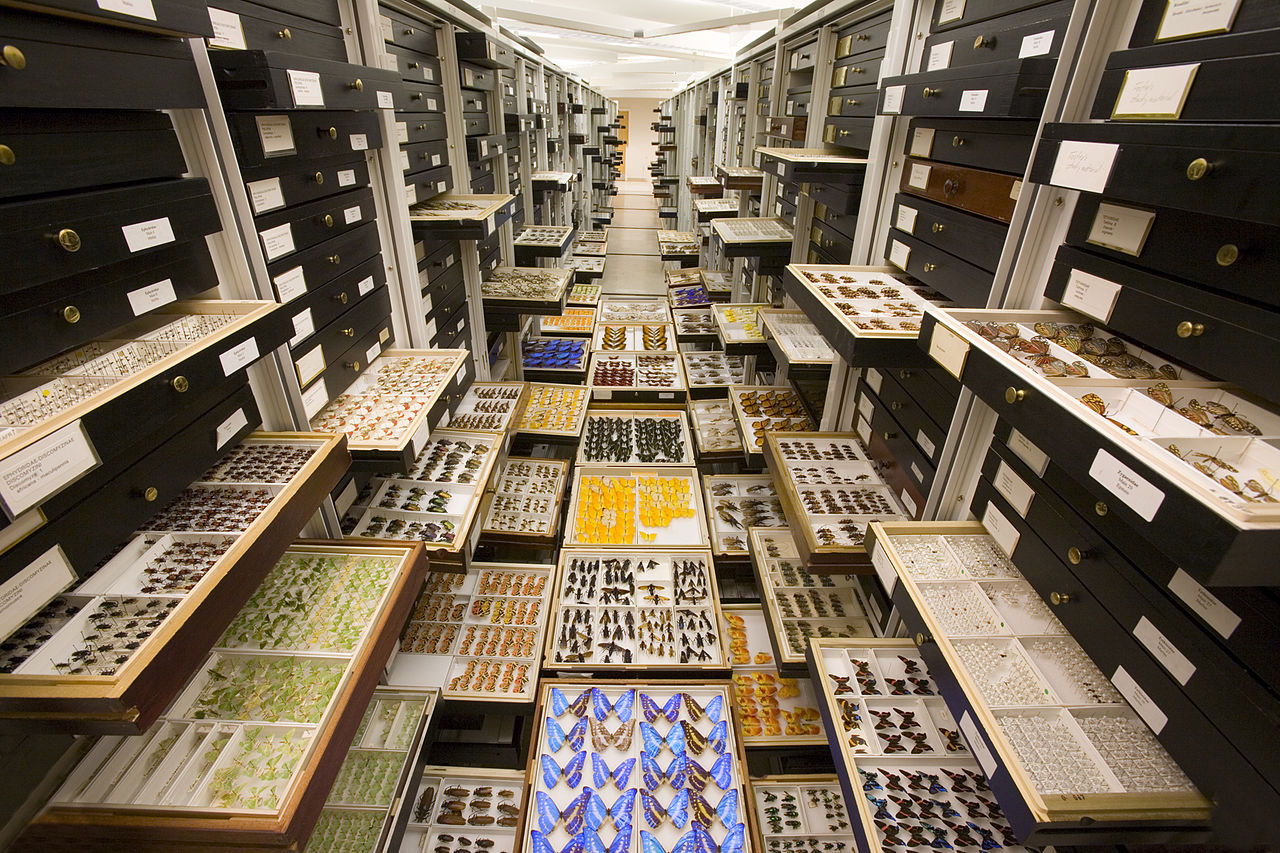
Classifying organisms
Wikimedia
Differences in teeth and skull shape has made classifying one family of fishes complicated. The goal of taxonomy is to organize species in a way that shows evolutionary lineage of an organism; all species within a group should share a common ancestor. Scientists aren't confident that this is true within a particular genus of ghost knifefish, Sternarchogiton.
Advancements in technology have enabled scientists to analyze the hereditary material of organisms. This is useful for mapping out lineages, however, molecular studies have shown conflicting results on the relationships between species of ghost knifefish. What does seem clear is that the traits currently used to qualify an animal as a ghost knifefish are not confirmation that the species share a common ancestor.
Researchers collected specimens of Sternarchogiton preto, a species of ghost knifefish within the genus Sternarchogiton. They dissected and analyzed the specimens and found four traits unique to S. preto. One of those was is the presence of three cranial soft spots compared to the two found in other species.
Based on their observations the team placed it into a new genus, Tenebrosternarchus, and renamed the species T. preto. Other ghost knifefish may be discovered or redescribed but to be added to Tenebrosternarchus they must share traits and a common ancestor with this "type species."
The concept of a species is the topic of spirited debate in the scientific community. Still, it is important to describe them properly. Classifying and describing species helps us make sense of the world around us and it has practical applications in research and our daily lives.
Mice's brains fight enemy cells by talking directly to their spleens
A "brain-spleen" axis allows them to regulate their immune response
Rama on Wikimedia Commons
We don’t think about spleens much these days, but ancient Greeks viewed the spleen as the arbiter of melancholy and happiness. Today’s scientists know that the spleen is an important part of the immune system, an armory where immune cells pick up antigens. If an antigen is recognized as an enemy (like a previously encountered virus), antibodies are sent off to battle.
The spleen is controlled by the autonomic nervous system, which also triggers the fight-or-flight response. But it’s also getting commands from higher up: the brain itself.
In a recent study, scientists identified the “brain-spleen axis,” a pathway linking the midbrain to the spleen that enables the brain to directly regulate immune function.
Researchers removed nerves from the spleens of mice, then injected the mice with antigens that should produce the immune cells that trigger antibody release. Without brain-spleen communication, immune cell production shut down. Two brain regions sent the bulk of these signals: the central nucleus of the amygdala, and the paraventricular nucleus of the thalamus.
Both regions activate when we’re stressed and regulate production of stress-related hormones. When mice were placed in stressful situations (like standing on a high, transparent platform), stress hormones released from the brain slowed down antibody production in the spleen.
If this brain-spleen axis also exists in humans, it raises an exciting possibility: by strategically activating certain brain regions through behavioral intervention or noninvasive stimulation, we may be able to boost immune function.
Ancient Greek physicians weren’t quite right, but they were on to something: the brain and the body (yes, even the spleen) are in constant communication, and we’re just beginning to understand their language.
Female toads breed with a different species when it helps their tadpoles survive
Could changing environments lead to more hybridization?
Wikimedia Commons
There are many barriers for reproduction between different species. So many, in fact, that hybridization — breeding between species — is rare and considered "an accident" within populations. Many hybrids are sterile and cannot pass on their genes; the few fertile hybrids are often unable to find mates or produce healthy offspring themselves.

A saucy flirtation
Wikimedia
Why, then, would the Mexican spadefoot toad and the plains spadefoot toad be seen hybridizing so often? Is it possible that these toads actively hybridize based on the current environment?
Although male hybrids are completely infertile and female hybrids are less fertile than their parents, hybridizing can be adaptive for the plains spadefoot. Spadefoot tadpoles develop in desert ponds that often dry up before the tadpoles are adults, resulting in their death. Hybrid tadpoles, however, develop faster than pure plains spadefoot tadpoles. This increasing the chances of the tadpoles reaching adulthood and passing on their parents’ genes.
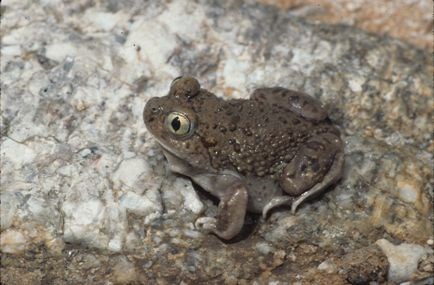
Mexican spadefoot toad
National Parks Service
In a recent study published in Science, researchers investigated what traits of Mexican spadefoot males lead to healthier offspring. They bred plains spadefoot females with a variety of Mexican spadefoot males and found that males with the slowest vocal calls had offspring that developed the fastest.
Females were then presented with vocalizations from either a fast-calling or a slow-calling male, in either a shallow pond — where hybridization is advantageous — or a deep pond — where it is not. Swimming towards certain calls indicated preference. They found that females preferred slow-calling males, but only when they were in shallow ponds. In deeper ponds, they had no preference. Plains spadefoot females are actively choosing to hybridize specifically with males that will have fast developing offspring only when there is a chance that ponds will soon disappear.
This active choice by female plains spadefoot toads gives their offspring an adaptive advantage, ultimately allowing for the continuation of plains spadefoot genes in the population. Across the animal kingdom, this work begs the question: will active hybridization become more common as habitats change and some species are more adapted to the current environment than others?
Celebrating lasers and photonics on the International Day of Light
Innovations in harnessing light, from individual photons to laser beams, have revolutionized our world
Photo by Sarah Wolfe on Unsplash
The laser is a fundamental component of many everyday electronic devices: barcode scanners in supermarkets, laser printers at the office, CD players (remember those?), computer drives, and so on.
The International Day of Light is celebrated on May 16th every year, commemorating the first successful operation of the laser by Theodore Maiman in 1960. Sixty years since, lasers have brought us much more than an abundance of funny cat videos — lasers and other light-based technologies have completely revolutionized the world we live in.
Light plays a crucial role in the telecommunication systems that bring us mobile networks and the internet. For example, fiber-optic cables are used to send information in the form of light pulses over long distances, and bring high-speed internet into our homes. Laser communications also have huge potential for improving communication in outer space, an area of active research.
Lasers are important tools for spectroscopy, which looks at how materials interact with light. For instance, scientists can study how bonds form during chemical reactions using ultrafast pulsed lasers. Researchers have also used lasers to trap individual particles in so-called “optical tweezers”, a technique used popularly in biophysics to study DNA. Understanding the nature of light-matter interaction and the mechanisms that underpin it has been key to developing new photonic devices such as light-emitting diodes (LEDs) for cheaper and more energy-efficient illumination, and improving solar panels for better energy harvesting.
There are countless other examples of incredible work in the field of photonics. Lasers have been a gamechanger for the medical industry, where new imaging techniques enable better diagnostics and laser-based treatments such as photodynamic cancer therapy have emerged. More fundamentally, the field of quantum optics investigates how individual photons of light can be generated and controlled, which will be essential for the development of quantum communications in the future.
We owe laser physics and photonics the world we live in today, and it is clear that the study of light will continue to play a key role in shaping our tomorrow.
Freshwater species boom in the time of the insect apocalypse
A new study summarizes findings about the fate of insect species across 166 studies and 41 countries
Yanna Zissiadou on Unsplash.
The insect apocalypse is here. It is estimated that over 50 percent of insect species have disappeared since 1970, and currently 41 percent of insect are at risk of extinction. But new research from a team in Germany shows it’s not all black and white — rather, it’s terrestrial and freshwater.
A study published in Science found that while terrestrial insect abundance has declined by 9 percent, freshwater species have increased by 11 percent. This complicates the idea of the insect apocalypse — while many species are at risk of disappearing altogether, land use changes and conservation play a large role in the narrative of disappearing insects.
The group examined long-term insect monitoring studies, tracking insect abundance across ecosystems. They examined over 1600 sites across 166 studies in 41 countries. Studies in protected areas showed weaker trends, strongest trends were found in unprotected areas. Urbanization, agriculture, and other land use changes could all be possible drivers of terrestrial species disappearing.
Improvements in water quality over time could be a contributor to the abundance of freshwater species, suggesting habitat protection and restoration may be an effective way to combat species decline. But, it’s not a one size fits all solution. Roel van Klink, the lead author on the study, thinks insect conservation should be a priority: “Insect conservation is not necessarily different than conservation of larger species, but is more difficult, because there are so many more species of insects and they all have their needs”.
Using artificial intelligence to discover new treatments for superbugs
Machine learning is pointing researchers toward molecules that are structurally different from current antibiotics
Alexander Klepnev on Wikimedia Commons.
Antimicrobial resistance is an emerging threat to healthcare systems worldwide. As a consequence of the spread of drug-resistant bacteria, also called “superbugs,” medical treatments could become ineffective for an increasing number of people in the next years. To fix this huge problem, chemists are asked to find new effective antibiotics.
Drug discovery is an expensive and time-consuming process during which pharmaceutical chemists look for new candidate molecules to interact with a particular target protein or pathway causing the disease. Chemists screen large libraries of thousands to millions of molecules, looking for compounds with specific biological effects and low toxicity. However, these screenings are not very efficient: if chemical libraries don’t include molecules with enough structural diversity, chemists will fail to discover antibiotics with molecular structures different from the ones already tested in laboratories or clinical trials.
Now machine learning is flanking chemoinformatics through innovative deep neural network approaches to find new drugs. An example of how this approach works can be seen in a recent study by James Collins and coworkers at MIT. First, researchers trained a neural network model to predict growth inhibition of Escherichia coli using a set of 2335 diverse molecules; then, they applied the optimized neural network model to screen large chemical libraries with more than 107 million molecules.
They ended up with a list of candidate molecules structurally different from known antibiotics, and ranked them based on their predicted biological activity. Among those candidates, they found that halicin, a compound under investigation as a treatment for diabetes, displayed high efficacy against E. coli and a large spectrum of pathogens such as Acinetobacter baumanii, at the top list of resistant bacteria which urgently requires new antibiotics.
Research groups are currently developing similar deep learning approaches to find new compounds that could fight the COVID-19 virus. This suggests how recent improvements in machine learning can assist chemists' work to speed up and lower the costs of the drug discovery process.
An extra 1 part per billion of pollution comes with an 8 percent increase in COVID-19 mortality
Environmental protection and coronavirus are inextricably linked
Prami.ap90 on Wikimedia Commons.
The quality of air in your community can have a huge effect on your health. According to the World Health Organization, a third of heart disease, lung cancer, and stroke deaths can be attributed to air pollution exposure.
As the COVID-19 pandemic has suddenly caused the world to turn upside down, answers for how to slow the spread and improve outcomes for those already ill are needed. Researchers at the Harvard T.H. Chan School of Public Health realized that there is a significant overlap between the underlying conditions that put people at high-risk for severe COVID-19 illness and health issues that are caused or exacerbated by air pollution, and wanted to know if the two are directly related.
The research team looked at air pollution and COVID-19 death data from over 3,000 counties across the United States, being sure to consider variables that might affect the results like population density, social distancing policies, and percent of people that are at high-risk for severe COVID-19 illness from other factors such as smoking and old age.
Their results showed that an increase of just one part per billion (PPB) in long-term air pollution exposure is significantly associated with an 8% increase in the COVID-19 mortality rate.
The authors noted that their results show how important it is to continue enforcing our air pollution regulations. Despite this and other evidence that air pollution leads to a number of public health concerns, the United States Environmental Protection Agency proposed relaxation of environmental rules during the pandemic
Hand hygiene isn't implemented rigorously across the world, even in health care
It's not always easy to get alcohol or soap-based washes where they are needed
CDC on Unsplash
May 5 was World Hand Hygiene Day. This year, the World Health Organization’s (WHO) “SAVE LIVES: Clean your hands” campaign takes on increased significance amid the COVID-19 pandemic.
In a recent letter in the Journal of Hospital Infection, three researchers outlined that hand hygiene with alcohol-based rubs are one of the most effective measures to prevent COVID-19 cross-transmission among healthcare workers. This seems obvious, especially now, but despite the many coordinated campaigns and efforts in the past, hand hygiene has yet to be implemented rigorously across the world.
Hand hygiene is often difficult to achieve in over-crowded healthcare settings, and in settings where resources may be limited. For example, in 2016, in eight out of 55 countries with data available, more than half of health care settings lacked appropriate handwashing facilities (i.e. water and soap or alcohol-based hand rubs) at points of care, as per a global baseline report compiled by the WHO & UNICEF.
To complicate matters further, healthcare workers, especially nurses, are often exposed to infectious pathogens, must work long hours and may have limited access to the necessary personal protective equipment in an infectious outbreak like COVID-19. With all of this in mind, it is important now, more than ever, that everyone practices hand hygiene rigorously.
The WHO proclaimed 2020 to be the Year of the Nurse and the Midwife, so it’s unsurprising to see that their specific calls to action include calling on nurses and midwives to take special care with cleaning their hands, and for policy makers to increase staffing levels to improve the quality of healthcare. Similarly, the CDC has issued a Clean Hands Count Campaign to address myths around hand hygiene.
So yes, please go wash your hands. Plain soap and water will do, and if your skin is getting too dry, find a greasy or thick cream to apply. Just don’t stop washing your hands.
Supreme Court ruling protects Hawaiian reefs from contaminated groundwater
Counties and businesses cannot pump contaminants into the ocean, even "indirectly"
Patrick_McNally on Wikimedia Commons
The U.S. Supreme Court recently ruled in favor of environmentalists six to three on a historic case involving the scope of the Clean Water Act. Maui County, Hawaii was sued by environmental groups over federal water quality permits because pollutants from the county’s wastewater treatment plants were seeping into the ocean, devastating local reefs. The county argued that it did not need permits because wastewater was pumped into groundwater wells, which they claimed did not count as being discharged directly into a “navigable water body” – such as oceans, lakes, and rivers – as specified by the Clean Water Act.
Scientists at University of Hawaii, Manoa performed a groundwater tracer study and concluded that 64% of wastewater from the plant was reaching the ocean through groundwater, with an average travel time of 15 months.
The court’s ruling clarifies that permits are needed for indirect water contamination that is the “functional equivalent” of directly discharging contaminants into surface waters. Opponents claim that the ambiguity of what “functional equivalent” means can put businesses, counties, and homeowners in trouble for not acquiring permits.
On the other hand, the ruling has been considered a win for science. The application of the Clean Water Act to groundwater has been open to interpretation, and regulation often falls under the domain of states. But it’s challenging to draw boundaries between groundwater and surface water since the two systems are hydrologically connected, making it ambiguous where one set of regulations end and the others begin.
This ruling closes a loophole in the Clean Water Act and broadens its definition of what counts as direct discharge into federal waters, emphasizing this hydrologic connection. Scientific evidence will now be central to future cases, giving federal waters more protection from pollutants.
West Nile Virus-carrying mosquitos managed to survive a German winter
Europe is usually too cold for tropical diseases to persist for long, but climate change helped it overwinter
David Barillet-Portal via Wikimedia
The summer of 2018 in Germany was the second hottest and driest year on record, and while this made for a beautiful season of beach-side fun, it also brought a deadly disease with it. The West Nile Virus (WNV) outbreak of 2018 was a single-introduction event, thought to be from the Czech Republic. The infection was detected in wild and aviary birds such as owls and blackbirds, in addition to horses. This was the first documented occurrence of WNV in these birds in Germany. When the outbreak was declared over, a sigh of relief was felt across the country. But the problem was far from over.
In 2019, the European Centre for Disease Prevention and Control declared another WNV outbreak. The 2019 outbreak was determined to be due to transmission from resident mosquitoes to birds and horses, as is typical of WNV. The difference was in that birds and horses could be infected by being in the same area as an infected animal, even if they didn't directly overlap there in time. This suggested that the virus was living in the environment itself, making it infinitely harder to control. While horses cannot transmit the virus, bird and mosquito transmission that can survive and be spread indirectly in an affected area is a scary concept.
The 2019 outbreak also suggests that the WNV infected mosquitoes managed to overwinter successfully. Many tropical diseases are not a problem for Europe, North America, and other countries with cold winters because they and/or their hosts die in the cold, and must be re-introduced to return to the same area. But these mosquitoes managed to survive the German winter.
This is most likely linked to climate change. Diseases that used to be restricted to hot climates are now spreading globally because they can survive in ever-warmer climates. This could only be the tip of the iceberg, as researchers predict we will see more tropical diseases invade traditionally cooler areas.
As scientists look to the skies to track mosquitoes, birds, and changes in sunlight hours and temperature, we can only wait and see if the prediction will come true.
Got a sweet tooth? Your gut bacteria are asking for some sugar
The gut microbiome and the brain communicate on a desire for glucose (in mice)
Joanna Kosinska on Unsplash
From kids with sugar rushes to grandparents who swear they just need one more bite of chocolate, humans absolutely love sugar. In an evolutionary way, it makes sense. Sugar used to be relatively hard to come by, and it is packed with valuable calories. Recently, however, our relationship with sugar has been complicated, to say the least.
In the US, we consume an average of 2.5 cans of soda everyday, far exceeding any nutritional guidelines. While we continue to study why our brains love sugar so much, a group of scientists showed that it might not even be, technically, our fault.
The team from Columbia University found that the gut-brain axis (the connection between bacteria in your gut and your brain), is essential in the sugar preference of mice. The scientists directly injected either glucose or an artificial sweetener to the guts of mice, and saw an activation of different regions of the brain when glucose was present, but not with the artificial sweetener.
Next, they genetically silenced that specific brain region, which completely took away the mice’s preference for sugar. They were also able to modify that region to induce the mice to enjoy new flavors.
One of the key things in the study is that all of the action is happening away from the tongue. This shows that there are circuits inducing our love for sugar, beyond our love for sweet tastes. This also helps explain why artificial sweeteners have not changed our consumption of sugar, since they fail to activate this new gut-brain circuit. Although we need to verify how this translates to humans, this new circuit offers new exciting insights.
Drones are better than tissue samples for measuring humpback whale body conditions
The two metrics perform similarly for much of the year, but aerial images capture changes during the breeding season where tissue samples do not
Photo by Will Turner on Unsplash
In order for researchers to keep track of animal populations, it is necessary not only to know how many there are but also how healthy they are. This often requires tissue or blood samples, but for large animals such as whales, collecting samples is very difficult and it can interfere with their natural behavior. Humpback whales go through especially extreme body condition changes throughout the year. They migrate from their polar feeding areas to warmer breeding grounds, during which time adults spend months without eating.
Researchers measure changes in body conditions of migrating whales by checking the lipid content of their blubber layer – a layer of reserve energy that keeps them warm and allows them to go without eating for long periods of time. They can also use drones equipped with small cameras to measure things such as body length and volume from aerial images. However, in order to find out if the different measurement methodologies are reliable, they need to compare them.
So, a group of researchers in the coast of south-west Australia collected drone images and blubber samples from the same individuals of Humpback whales at the beginning and end of the breeding season to find out if the external (body shape) and internal (blubber fat, measured by tissue biopsy) measurements correlate.
They found that the body volume of the whales decreased through the breeding season. This was expected since the adults are fasting and females are nursing their calves during this time. However, they found no big changes in the fat composition of the blubber layer during the same period. These results differ from other species of whales and it signals that for humpback whales, monitoring their body sizes is a more accurate and less invasive metric than tissue samples for checking if the populations are being able to feed well and reproduce.
Parasitic wasps murder insects with a smallpox-like virus
...and other words everyone is happy to hear
In the virus world, smallpox and other poxviruses are horrifying. Despite the fact that smallpox was successfully eradicated in the 1970s, the entire family of poxviruses still strike fear into the heart of scientists.
But if you're a parasitoid wasp, poxviruses are essential. Parasitoid wasps are no stranger to being outcasts. These wasps make their living by laying their eggs inside other insects so their larvae can slowly eat away the host and release the mature insects fully fed and ready to reproduce. Frightened yet? It gets worse.
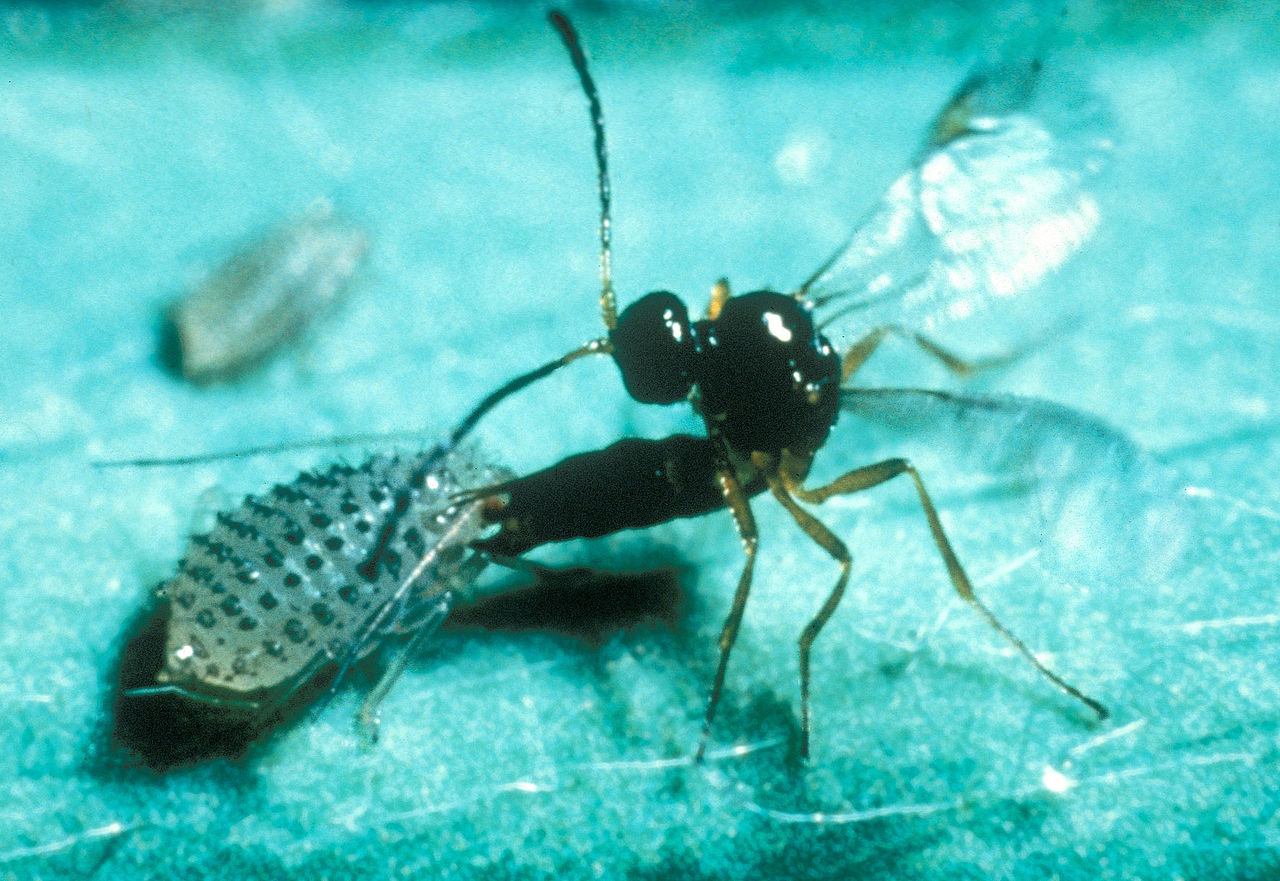
Parasitic wasp attacking an aphid
Wikimedia Commons
These wasps carry a type of poxvirus, Diachasmimorpha longicaudata entomopoxvirus (DIEPV) in their venom glands. This virus has evolved with them, and is now built right into their genes, to be passed on to the next generation of parasitoid wasps. But why would this trend of evolution be a good thing for the wasps?
New research sheds some light on why this convergent evolution has occurred from the perspective of the wasps themselves. It turns out that DIEPV is particularly deadly for flies, and other small insects. This means that when the parasitoid wasp lays its eggs inside the unwilling host, the DIEPV virus grows along with the pupa, and kills the host even faster, releasing tissues and destroying organs for pupal digestion faster than the natural process. Thus, parasitoid wasp offspring mature, are released, and reproduce faster with greater success because DIEPV helps them kill the host. After this true-life horror story, the cycle repeats again so that these young wasps can make new wasps of their own.
So next time you swat a wasp and feel your heart beat a little faster as you avoid being stung, imagine the unfortunate fate you would be facing if you were an insect confronting a parasitoid wasp. Now that is pretty scary.
Need a memory boost? Try sleep and exercise
But probably not at the exact same time
The internet is full of advertisements for supplements and brain-training games to help improve your memory, most of which are of questionable efficacy. Now, a new study from researchers at Concordia University in Quebec provides scientific evidence for a way that people can improve memory. Best of all, it’s completely free. Here’s the secret: exercise and then take a nap.
No, that's not a joke.
Scientists first randomized participants into one of four groups: those who exercised and napped, those who only exercised, those who only napped, and those who didn’t do either. In the morning, participants randomized into one of the two exercise groups did 40 minutes of moderate-intensity cycling. Then in the early afternoon, all of the groups were shown 45 different pictures. Half the participants were then allowed to nap for one hour. In the early evening, all of the participants were shown 90 pictures and asked to identify which ones they had seen earlier than day.

On this declarative memory task, neither exercise nor napping alone increased memory performance. However, the group that exercised before learning and napped afterwards had significantly better accuracy on the task compared to groups that only exercised or only napped. This suggests that exercise and sleep act synergistically to improve memory. Future research could examine whether this finding holds true for other types of memory tasks or whether the time of day that people exercise influences the effects of exercise on memory.
Captive butterflies have duller, shorter wings, and weaker grips than their wild counterparts
Is captive rearing really the answer to monarch butterfly conservation? Maybe not, according to this new research
Jessica Bolser/USFWS via Wikimedia Commons
Monarch butterflies are a key pollinator and complete an arduous migration as part of their life cycle. Conservationists worry about their rapidly declining numbers, as the butterflies battle against climate change and pesticides. To tackle this, people are breeding them in captivity, and releasing them when they are fully grown.
To the untrained eye, captive butterflies are just as beautiful as wild ones. Scientists know that their migration skills aren’t as fine tuned as their wild counterparts – a process which is essential for the butterflies to successfully lay their eggs. To understand why, Researchers from the University of Georgia put some captive raised butterflies through their paces, to see if their beauty and brawn's lives up to that of their wild cousins.
Both captive and wild butterflies performed a grip test. By measuring the force needed for the butterflies to release their grip on a branch, researchers discovered that the captive butterflies strength was not up to wild standard. Captive butterflies also have much paler and shorter wings than wild butterflies.
These three traits are essential for successful migration. Grip strength, in particular, is what the butterflies need to latch onto branches and trees when resting or if winds become too severe.
In captivity, there is no “survival of the fittest.” The butterflies are reared and nurtured, and most of them survive. If these captive butterflies mate with the wild population, their offspring might be at a big disadvantage. Beyond that, the authors of the paper note that their findings explain a trend of decreased migratory success in captive-reared monarch butterflies.
Viruses may solve the problem of antibiotic resistant bacteria
It has worked in mice and moths, but human trials are just now getting going
Dr Graham Beards via Wikimedia Commons
Antibiotics changed the face of medicine since their introduction in the 1940s. Before antibiotics came into widespread use, if a person accidentally scraped their hand and the wound became infected, there would have been a 1 in 10 chance that they would lose the limb. Antibiotics changed that.
However, the overuse and misuse of antibiotics have led to several bacterial pathogens becoming notoriously resistant to them. Therefore, scientists have been looking for alternate ways to treat bacterial infections. One such approach is bacteriophage therapy.
Bacteriophages are viruses that prey on bacteria. They infect their target bacterium, multiply, and break it open, thereby killing it. So, can we send in these sneaky viral hunters to kill bacteria that can't be killed by antibiotics?
Last year, researchers in South Korea showed that a novel bacteriophage they isolated from hospital sewage water (yes, you read that right) was active against 17 out of 40 antibiotic-resistant strains of A. baumannii that they tested. These researchers infected wax moth larvae and mice with antibiotic-resistant A. baumannii followed by treatment with the bacteriophage. The moth larvae and mice that were given the bacteriophage survived much longer than the ones that were infected but not treated. In fact, 100% of the mice infected with A. baumannii and treated with the bacteriophage survived, whereas mice that did not receive bacteriophage treatment died within five days of infection.
Mice and moths, sure. How about humans?
Last month, researchers in Australia enrolled 14 critically ill patients with bacterial sepsis caused by drug-resistant S. aureus bacteria into a safety trial for bacteriophage therapy. These patients were given a cocktail of phages with activity against drug-resistant S. aureus strains, along with the standard regimen of antibiotics to treat the infection. Phage therapy did not cause any adverse reaction in these patients and was associated with a reduction in bacterial burden and less inflammation.
Much needs to be done before bacteriophage therapy can become mainstream in humans. However, this study is an important step forward in understanding if bacteriophage therapy will be our ally in the war against drug-resistant bacteria.
We can measure coronavirus's spread by looking at people's poop
Municipal wastewater treatments plants are actually ideal testing locations
Roen Wainscoat on Wikimedia Commons
Many scientists are following the same rules of social isolation as everyone else. University labs around the world have closed, and we are pivoting to working from home, delivering lectures, supervising students online, and putting our research on ice for now.
Other scientists have completely turned their research programs around to start contributing to the fight against COVID-19. This includes heroic efforts to develop new screens for infection, new antibody assays, and rapid new blood tests. A very different kind of project has been started in many cities, including my adopted home of Stockholm, Sweden.
Researchers around the world now believe that, because most infected individuals shed the virus that causes COVID-19 (SARS-CoV-2) in their feces, it is possible to detect the virus in sewage (wastewater) and thereby track its spread through a city.
Wastewater treatment plants are the ideal testing site, as they typically serve one municipality where the citizens are also served by the same healthcare centers. The virus can be detected even at low levels, suggesting that wastewater testing could be a powerful surveillance tool to monitor circulation of the virus in a local area, and perhaps give an early warning of a resurgence in cases.
Projects are ongoing in the Netherlands at the KWR Water Research Institute, in Stockholm at the Science for Life Laboratory and the Royal Institute of Technology, and at institutes in Spain and Turkey, and there is growing global interest in the results.
These efforts will complement the ongoing work to roll out antibody testing that will tell local authorities roughly what proportion of their citizens have been infected without showing symptoms – knowledge that might let some people start returning to work earlier than anticipated.
One person's techno trash is a scientist's research tool
It's hard to study plant roots, but a plastic CD case makes it easier to observe a plant's underground activities
Plant roots are complex and delicate structures that provide the aboveground stem and leaves with nutrients and water. Studying them can tell us a lot about a plant's survival strategy and its associations with soil fungi and bacteria. There's a lot going on beneath our feet that we just can't see.
And that's part of the problem: roots are very difficult to study because they are hidden below layers of soil. To measure and observe roots, plant biologists must either dig up the plant, an approach aptly referred to as "destructive sampling," or install a see-through chamber called a rhizotron. A rhizotron is kind of like an ant farm: it allows you to observe what is going on in the soil though a clear panel. But rhizotrons can be expensive and, depending on a scientist's research goals, not worth the effort it takes to construct them.
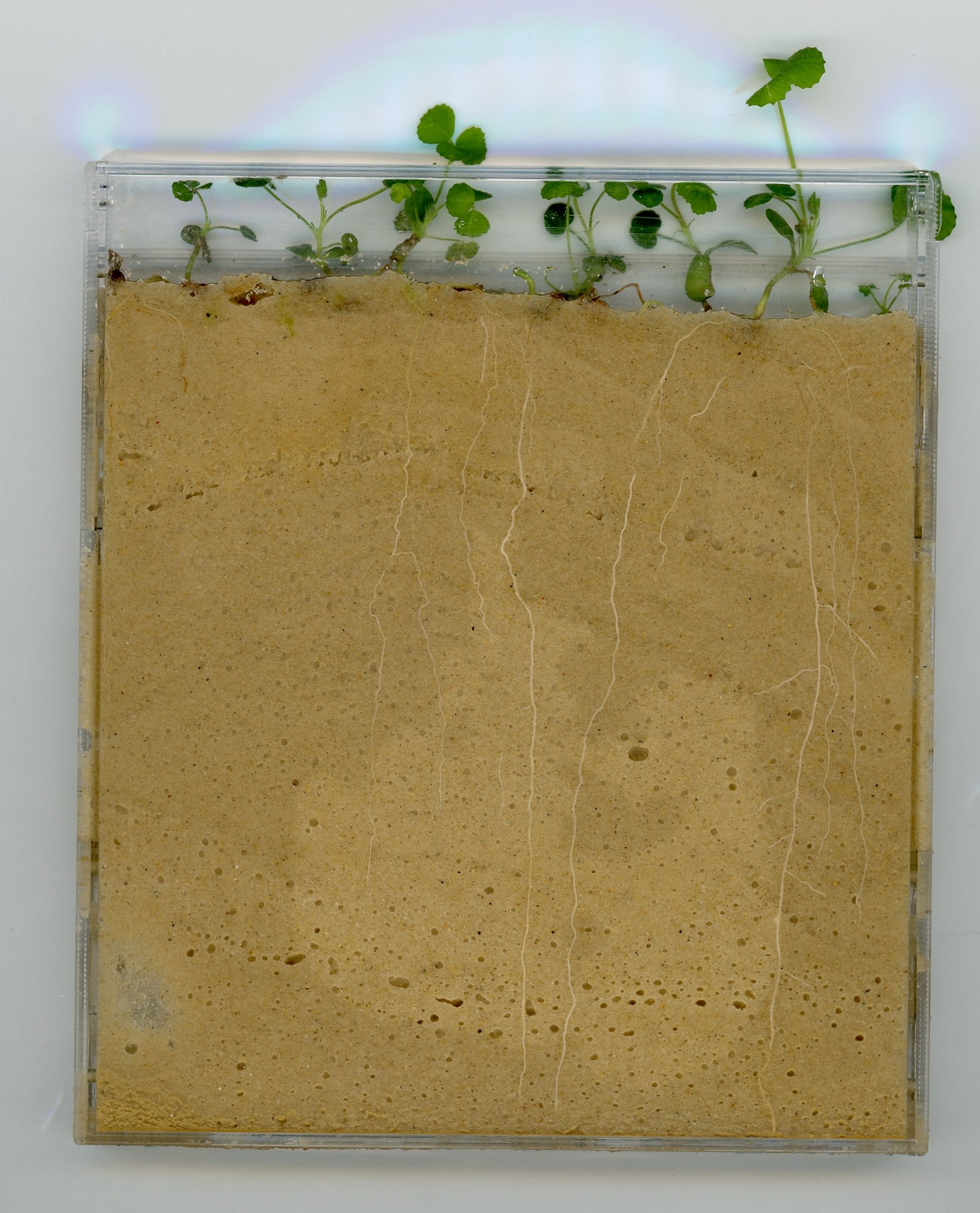
CD case rhizotron
Steven Cassidy
Now, a group of biologists from the University of Pittsburgh have developed an inexpensive and simple mini-rhizotron from a now-defunct household object: a plastic CD case. Their method was published in April in Applications in Plant Sciences. The case itself is filled with soil, and the growing plants protrude from the hinge. Because plants can sense and grow in the direction of gravity, storing the CD cases at an angle forces the roots to grow up against the see-through sides of the cases, making them easy to see and measure without disturbing the plant.
This method only works for studying small plants — there is no CD case large enough to grow a tropical tree! But it's a clever method that fills a scientific need, and one that the authors hope will make root research accessible to teachers, ecologists, agricultural scientists, and other researchers no matter what financial resources they have available.
CDC chimes in on disinfecting and reopening during pandemic
Guidance builds on administration's advice to reopen
This week, the US Centers for Disease Control (CDC) has released a suite of guidance documents to help US businesses reopen, as encouraged by the Trump administration.
The guidance comes with a “decision tool” for reopening and disinfecting public spaces, businesses, schools, and homes. Towards the start of the guidance, the CDC makes a key point: “The virus that causes COVID-19 can be killed if you use the right products.”

Much of the cleaning and disinfection guidance elaborates on using “right products” safely. The first step, according to the CDC, is routine cleaning with soap and water. It’s worth pointing out that regular soap and water will do just fine – no need for the antibacterial stuff that breeds drug-resistant bacteria and doesn’t help kill viruses, despite what you may have heard.
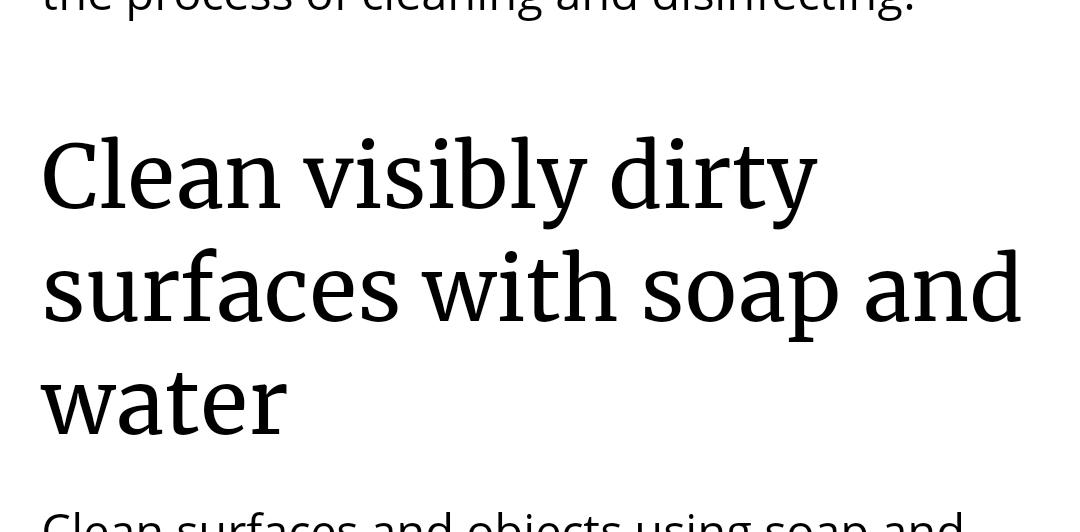
For larger establishments, the CDC also recommends using surface disinfectants approved by the Environmental Protection Agency (EPA) to reduce COVID-19 risks. When those disinfectants are unavailable, according to the CDC, bleach or alcohol will do.
Of course, this information isn’t exactly new – the CDC has been championing soap and water for months.
What is new is the context: a country scrambling to contain misinformation while juggling tens of thousands of new daily cases with a desire to end its most effective defense. Federal, state, and local governments are moving in different directions and at different speeds.
All the while, the CDC has been largely absent. With the new guidance, and a 17-page draft document sent to CNN that gives interim reopening direction to establishments like bars and childcare programs, the CDC appears poised for Americans to “return to work.”
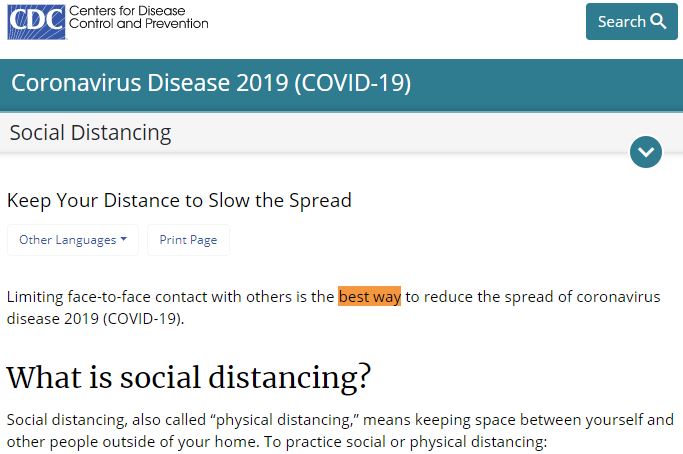
CDC guidance from April 4th
CDC
Still, the CDC offers a disclaimer:
It’s important to continue to follow federal, state, tribal, territorial, and local guidance for reopening America.
And now some stories of scientists getting mansplained to
Being an expert in your field doesn't stop people from telling you what they think
The Irritating Gentleman (Der lästige Kavalier) by Berthold Woltze
Many of our readers and friends are scientists and experts in their fields. Would that stop mansplainers from talking down to them? We asked if they had any stories of being mansplained to, and they did not disappoint. Here are a few of our favorites. If you have stories you'd like to contribute, please email me at dan@massivesci.com, or DM me on Twitter (@d_samorodnitsky). Anonymity guaranteed. All the below respondents asked to remain anonymous. These quotes have been lightly edited for clarity.
A wild kilogram expert appears
"Once I was going to a popular radio show to talk about a new science story. Someone came to escort me up to the studio and I apologized that, on our walk, I would have to watch a press conference so I could give an update from it on the air. The guy escorting me then proceeded to explain the topic of the press conference to me — the very topic I was on my way to explain on the radio show."
(Ed: "What were you going to talk on the radio about?" I asked.
"The new definition of the kilogram!")
I got it thanks
"I spent a sabbatical semester in Sweden (which I had believed to be the center of gender equality — it's not). Here the general assumption was that I was a young, foreign grad student, not a professor. I could only get things done by convincing a higher-ranking man about what I wanted to have done, and have him state that this was his idea, then it would happen.
"The worst situation was an IT guy who was trying to explain to me how video conferencing worked. I interrupted him to say that I did research in this area, so yes, I knew. He kept at it, so I pulled up my home page to show him a) This is me b) I am a professor and c) I do research on technology-based distance education. Oh, he said. And then he apologized. But I had to convince every man personally that I knew what I was talking about."
The cannabis avengers
"PhD candidate studying cannabis and psychosis here. I once told a man what I was researching and he proceeded to explain to me how cannabis can cure cancer. Also had plenty of men online explain to me that there are absolutely no negative effects of cannabis and I quote, "you know nothing of science."
"Who were these people?" Other scientists?" I asked.
"No. Organized stoners. The cannabis community can be hostile."
"Okay, can I quote you by name or do you want to remain anonymous?
"Better stay anonymous, thanks. Don't trust the cannabis avengers not to return."
There's a reason it's not called an Amateurs degree
"The one that pops to mind most quickly is when I started my PhD. I came in with a Masters and one of my new labmates started explaining shit about my study species to me. He had been a PhD student six months longer than me, with no Masters. I was a super expert, and we were in equal footing but he completely disregarded the degree I had earned in that topic that he didn't have."
Do you even know why you hired me
"I’m a chemist and I’ve lost count of times I’ve been mansplained to, but I think my favorite was the manager I had who explained to me what desomorphine was. I did my thesis on desomorphine, krokodil (the street synthesized version), and its derivatives. It was in my interview. I commonly spoke about it. “It’s basically codeine if codeine were crack,” I was told, with utter confidence.
"In some ways he wasn’t wrong, just drastically oversimplifying in a very patronising way. Codeine is used to make desomorphine in the street synthesis, so that’s not terrible. And desomorphine in street form (krokodil) is terrifically addictive with a very short lifespan — the high doesn’t last long. Cocaine is similar in that respect. The issue is that it’s nothing close in structure to cocaine, and in the job we were doing (LC-MS/MS detection in human bio fluids) it would have been pointless to look for it anywhere near cocaine on the data readouts.
"So basically, he did the equivalent of telling a marine biologist who wrote a paper on humpback whales, 'A whale is like a really big fish.' Technically not wrong, but very oversimplified, patronizing, and unhelpful."
Tinkering with brain proteins may add insulation back to damaged nerve cells
New research shows we might stop nerve damage from multiple sclerosis
Under a microscope, the brain looks like a cutdown forest of many tree stumps with dark tree rings. The "rings" are myelin, an insulation made of fat that wraps around nerves to help send faster electrical signals.
Unfortunately, myelin is also the target of many diseases like multiple sclerosis (MS), which affects more than 2.2 million people globally. In this disease, the immune system inexplicably attacks the body’s own myelin and the cells that produce it. As the now bare nerves die, cells can no longer reach the injured area to wrap new myelin around the damaged nerves.
Most treatments try to calm the immune response, but the real question is how to insulate the nerves again? In a recent study, scientists found that a pair of proteins — OSM and TIMP-1 — produced by brain cells called astrocytes may help.
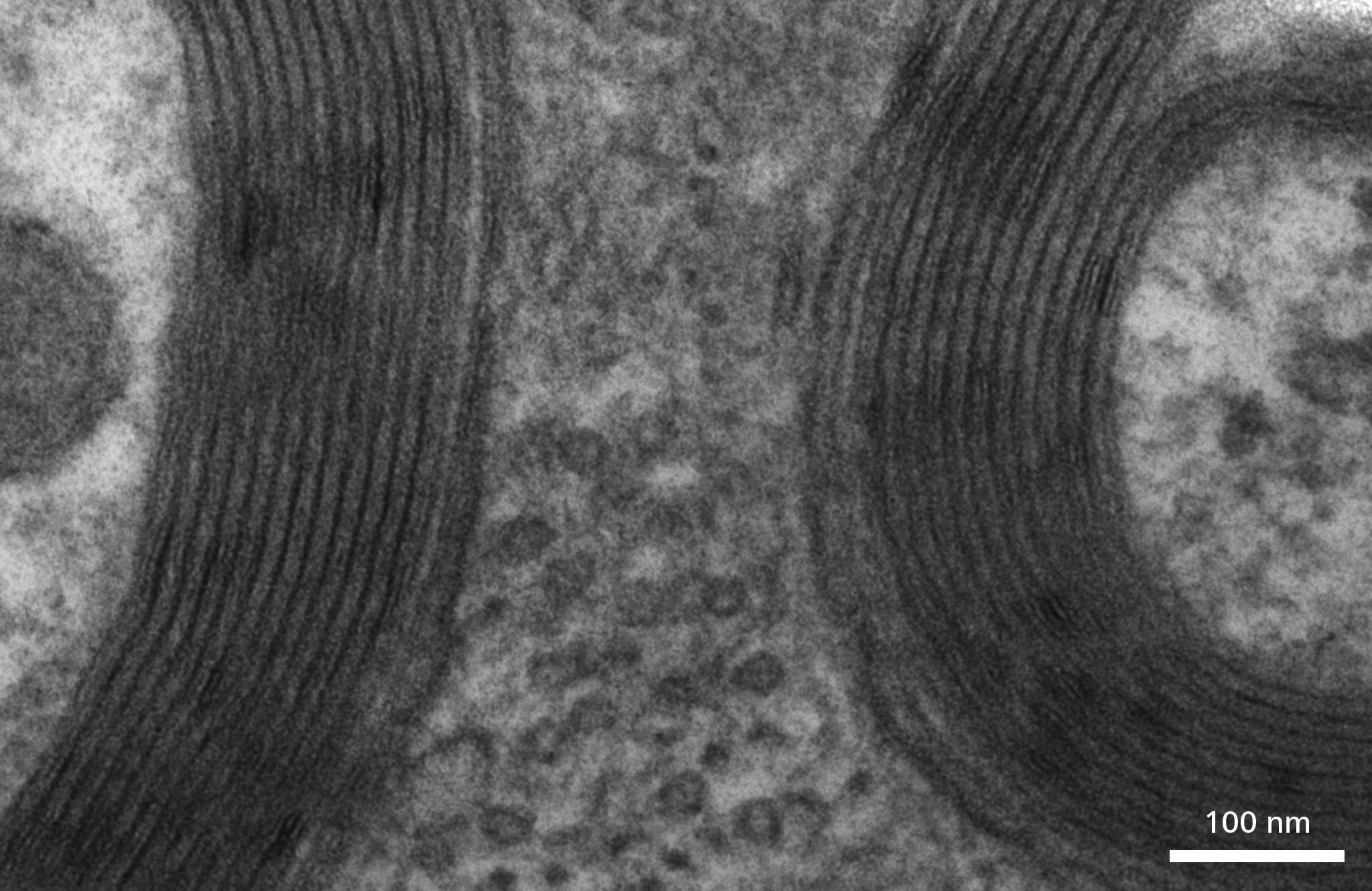
Myelin "tree rings"
ZEISS on Flickr
The authors first fed mice a myelin-damaging chemical and looked for changes in the mice's biological receptors — which are basically docking stations for key proteins. They discovered that animals who were able to grow new myelin had higher amounts of receptors for OSM proteins. When that receptor was genetically removed, mice had less new myelin and less TIMP-1. It turned out that removing TIMP-1 from mice causes very similar brain defects to those missing the OSM receptor.
Though re-insulating nerves isn’t simple, the authors believe manipulation of these two proteins in astrocytes could help people dealing with MS and other diseases. Preventing further damage by the immune system isn’t enough for these people — helping them cope with the existing injury is also necessary. Think of it this way: a tornado warning may help some people avoid catastrophe, but what good is that if they can’t rebuild?
Your local lake stores a surprising amount of carbon in its depths
Lakes are shouldering our carbon-excess burden, but that comes at a cost
Keeping track of the myriad sources and sinks of carbon on Earth is essential if we want to predict how our climate will change in the decades to come. Carbon dioxide and methane are potent greenhouse gases. On land, soils store a huge amount of carbon — about twice as much as the atmosphere — but they’re not the only terrestrial carbon sink.
Lakes cover about 4% of Earth’s non-glaciated land and they are constantly accumulating carbon. They pick up organic matter from soils, provide a home for photosynthesizers like algae and microbes, and they preserve organic matter in their depths. Lakes have the potential to store a huge amount of carbon. But we haven’t known how much lakes in different ecosystems could store or how carbon storage is affected by agriculture — until now.

Pixabay
In a new study, a team of researchers collected carbon burial data from over 500 lakes around the world, in every environment from deserts to tropical forests, and reported how carbon storage has changed since 1900. They found that carbon burial rates have increased in nearly all biomes. Lakes in boreal forests, temperate and tropical forests, and temperate grasslands contributed the most carbon storage.
So why the increase?
The authors linked increased carbon storage primarily to our changing land use practices. The widespread use of fertilizer adds nitrogen and phosphorus to terrestrial ecosystems, leading to a spike in photosynthesis and carbon burial in lakes. While too many nutrients can be a death sentence for lakes, it looks like — for now — these changes help lakes offset the carbon we’re pumping into the atmosphere.
The brain's imprint on the skull shows what separates humans from other primates
The key appears to be lateralization, meaning the specialization of different sides of the brain for different functions
Photo by Rishi Ragunathan on Unsplash
What makes us uniquely human? In recent decades, evidence for many supposedly uniquely human traits – such as communicative behavior, tool use, and self-recognition – has been observed in non-human animals. Still, many believe there must be something unique about the human brain.
One proposal is that the human brain is unique in its "lateralization," the asymmetric specialization of functions on one side of the brain or the other. Previous comparisons with chimpanzees have suggested that their brains do not exhibit the same degree of lateralization as the human brain.
But evidence for this view was limited, primate brains being rather hard to come by. To test the hypothesis, researchers from the Max Planck Institute for Evolutionary Anthropology and the University of Vienna have developed a novel method for modeling the brains of non-human primates such as chimpanzees, orangutans, and gorillas.
The researchers turned to skulls. They used endocasts – models of the brain based on the imprints they leave in our skulls – to compare the relative asymmetries in the brains of different primate species. The research revealed that there are similar patterns of asymmetric lateralization in other primate species as well, though less in chimpanzees than in gorillas or orangutans, which are more distantly related to us.
Interestingly, however, asymmetry varied more among human individuals than among individuals of the other primate species. This is presumed to be the result of the human brain’s great plasticity (the brain’s ability to change) and greater variation in human lifespan development. The human brain, it seems, inherited a lateralized structure common to other primates, which has since further evolved along with specifically human cognition and behavior.
These findings speak to our shared ancestry with other primates and animals. At the same time, they refine our understanding of human evolution. But further questions remain about the cognitive or behavioral functions of lateralization of non-human primates’ brains, and even about the brains of other animals.






















